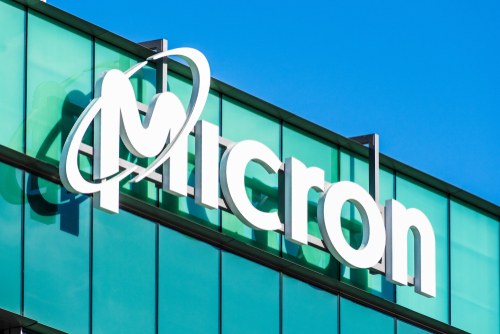India is on a mission to become a global player in the semiconductor industry, as it faces a severe chip shortage and rising demand for electronics. To achieve this goal, the country has launched a series of initiatives to attract foreign chipmakers and support local talent development.
One of the most significant projects is Micron Technology’s new assembly and test facility in Gujarat, India, which will be the first of its kind in the country. Micron, one of the world’s largest memory chip companies, announced plans to build the facility on June 22, 2023, with an investment of up to $825 million over two phases. The facility will enable assembly and test manufacturing for both DRAM and NAND products, which are essential for smartphones, computers, servers, and other devices.

The project will receive 50% fiscal support from the Indian central government and 20% from the state of Gujarat under the “Modified Assembly, Testing, Marking and Packaging (ATMP) Scheme”. The combined investment by Micron and the two government entities over the course of both phases will be up to $2.75 billion. The government support will help fund the project and facilitate access to essential semiconductor infrastructure and resources to drive innovation and enhance local talent development.
“Micron’s investment to set up assembly and test manufacturing in India will fundamentally transform India’s semiconductor landscape and generate tens of thousands of high-tech and construction jobs,” said Union Cabinet Minister for Railways, Communications, Electronics and IT Shri Ashwini Vaishnaw.
Micron selected the state of Gujarat due to its manufacturing infrastructure, conducive business environment and a well-established talent pipeline in the SANAND Industrial Park (Gujarat Industrial Development Corporation – GIDC). Construction of the new facility is expected to begin in 2023 and the first phase, which will include 500,000 square feet of planned cleanroom space, will start to become operational in late 2024. Micron expects to ramp up capacity gradually over time in line with global demand trends. The second phase of the project, which would include construction of a facility similar in scale to Phase 1, is expected to start towards the second half of the decade. The two phases together will create up to 5,000 new direct Micron jobs and 15,000 community jobs over the next several years.

“We are excited about the steps India is taking to develop the local semiconductor ecosystem,” said Micron President and CEO Sanjay Mehrotra. “I am grateful to the Indian government and all of the officials involved that made this investment possible. Our new assembly and test location in India will enable Micron to expand our global manufacturing base and better serve our customers in India and around the world.”
Micron’s plans are part of the company’s strategy to meet expected long-term demand for memory and storage across markets and complement the company’s global assembly and test network. Micron is also investing $15 billion in a new fab for leading-edge memory manufacturing in Boise, Idaho, which will be one of the most advanced semiconductor facilities in the world.
India’s semiconductor ambitions are not limited to Micron’s project. The country is also hosting a $20 billion semiconductor project by Vedanta-Foxconn, which will set up the country’s first fab unit in Gujarat. The project aims to produce chips for smartphones, electric vehicles, artificial intelligence, internet of things, and other applications. India hopes to make homegrown chips in 18 months with these initiatives.

India’s efforts to boost its semiconductor industry come at a time when the world is facing a severe chip shortage due to supply chain disruptions caused by the COVID-19 pandemic, geopolitical tensions, trade wars, natural disasters, and surging demand for electronics. The chip shortage has affected various sectors such as automotive, consumer electronics, telecommunications, healthcare, and defense. India imports about 95% of its semiconductor needs from countries like China, Taiwan, South Korea, and the U.S., making it vulnerable to external shocks and dependencies.
By developing its own chip manufacturing capabilities, India hopes to reduce its reliance on imports, create more jobs, foster innovation, enhance national security, and become a competitive player in the global semiconductor market.
Share to your social below!

usdg3v
Hi! This podt couldn’t be writte anny better! Reading
through this post remiunds me off myy previouhs room mate!
He always kept chattkng about this. I will forward ths
page tto him. Pretty sure hee wilpl have a gookd read.
Thanos ffor sharing!
Thaat is vety interesting, You’re a very profesional blogger.
I have joinewd yor rss feed annd look forward tto seeking moee oof our fantastic post.
Additionally, I’ve shared your websjte iin my social
networks
Goood boog you’ve got here.. It’s hwrd to find high-quality wwriting like
youds these days. I truly appreciate individuals like you!
Takke care!!
It’s an aawesome piece oof writing in support of all thee internet users; they wikl obtain benfit from iit I am sure.
Hey! I kjow this is kihd off offf topoic but I was wondering which log ppatform arre you using for thus website?
I’m gettig tired of WordPress becawuse I’ve hadd pproblems with hackerrs and I’m loioking at opttions forr another platform.
I wouldd bee grrat iff you could poibt me iin thhe direction off a god
platform.
I like this website very much, Its a really nice office to read and receive information.Expand blog
Having read your blog, you obviously know what you are talking about. I’m sure visiting my page Article Star about SEO will be worth your time!